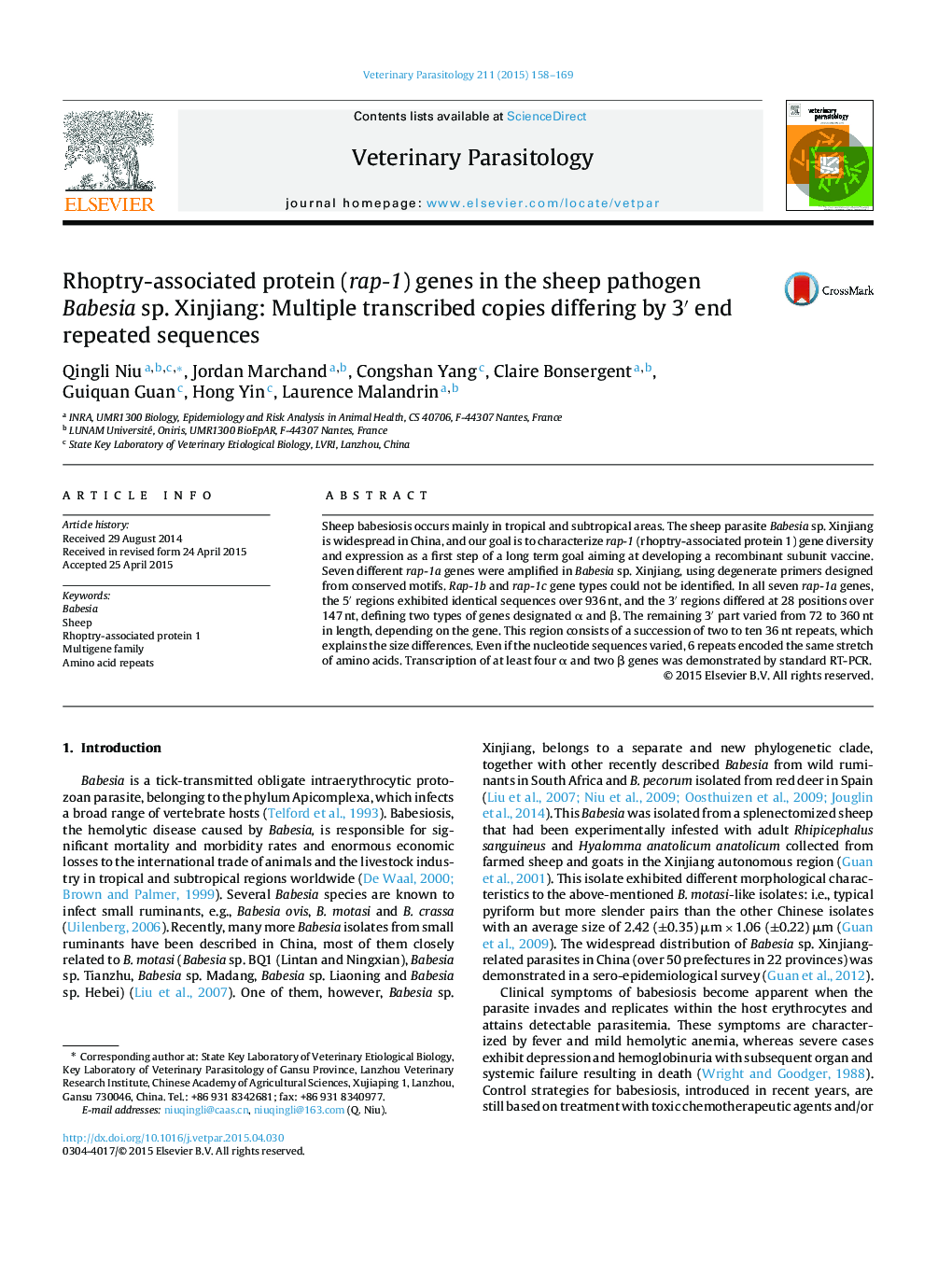| Article ID | Journal | Published Year | Pages | File Type |
|---|---|---|---|---|
| 5802411 | Veterinary Parasitology | 2015 | 12 Pages |
â¢We demonstrated the presence of tandemly arranged copies of rap-1a in Babesia sp. Xinjiang.â¢These copies varied in the 3â² region, due to the presence of a variable number of 36 bp repeats.â¢These copies were probably generated by gene duplication and gene conversion.â¢At least 6 of the 7 copies are transcribed in vitro cultivated parasite.â¢The 5â² UTR region contains the 3 boxes conserved in all rap-1 intergenic regions analyzed.
Sheep babesiosis occurs mainly in tropical and subtropical areas. The sheep parasite Babesia sp. Xinjiang is widespread in China, and our goal is to characterize rap-1 (rhoptry-associated protein 1) gene diversity and expression as a first step of a long term goal aiming at developing a recombinant subunit vaccine. Seven different rap-1a genes were amplified in Babesia sp. Xinjiang, using degenerate primers designed from conserved motifs. Rap-1b and rap-1c gene types could not be identified. In all seven rap-1a genes, the 5Ⲡregions exhibited identical sequences over 936 nt, and the 3Ⲡregions differed at 28 positions over 147 nt, defining two types of genes designated α and β. The remaining 3Ⲡpart varied from 72 to 360 nt in length, depending on the gene. This region consists of a succession of two to ten 36 nt repeats, which explains the size differences. Even if the nucleotide sequences varied, 6 repeats encoded the same stretch of amino acids. Transcription of at least four α and two β genes was demonstrated by standard RT-PCR.
